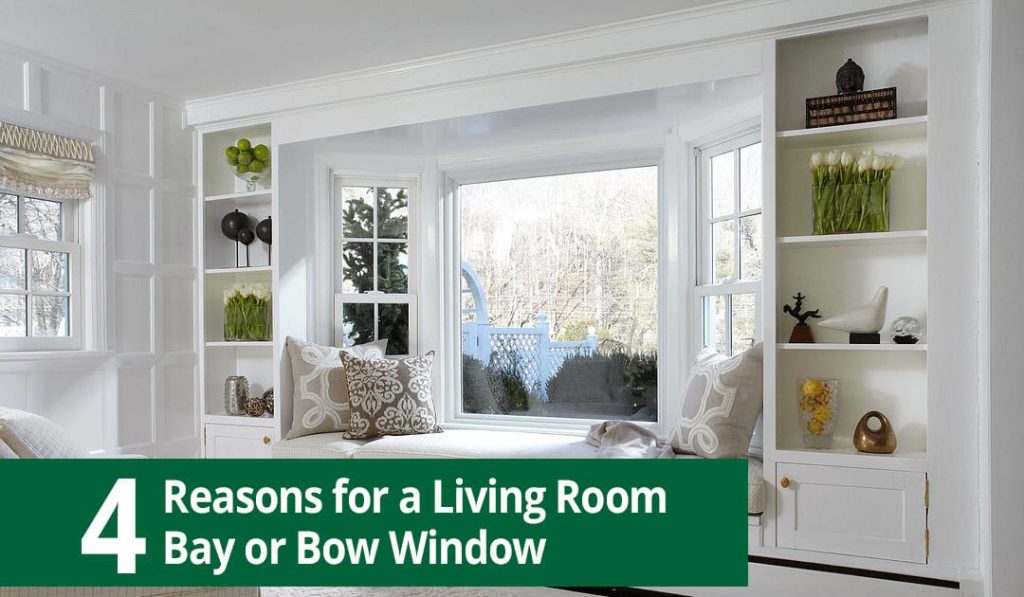

Picture windows are common in many rooms but are particularly popular in living rooms, where they allow light into the home while also providing unobstructed views of the outdoors. There are many benefits of picture windows – but did you know that there may be even more benefits to installing bay or bow windows instead? Bay and bow window styles have many features and benefits that picture windows just cannot match. Here’s what to consider as you decide whether to replace your home’s picture windows.
Bay and bow-style windows are typically made up of several individual windows that protrude outward into the yard. The windows that make up bay or bow windows can be all operable or include both operable and inoperable windows.
In other words, if you’re tired of having a completely inoperable window in your living room that doesn’t allow you to let in fresh air, replacing your picture window with a bay or bow style would be an effective way to ensure that you can open your living room up to the outside, allowing natural ventilation in your home.
Bay and bow windows protrude outward into the yard, which enables you to capture more sunlight from your yard and bring it into your home. More glass means more light, and more illumination indoors. That makes for a better ambiance in your house, and a healthier indoor atmosphere.
Because bay and bow windows project outward into the yard, installing these windows makes it easier to capture a wide view of the area around your house. Is there a beautiful view just outside your living room window? If so, installing bay or bow windows can help you capture that view.
Bay windows make excellent window seats. Once this type of window is installed, you can enjoy a view of the outdoors from inside your house. Install a bay window in your home and you’ll soon have a perfect place to sit and snuggle up with a good book, a pet or your favorite person. You can make the seat more comfortable by placing a few soft pillows there.
A lot of people have a picture window in their living room, but bay and bow windows are a little more unusual and come with many features and benefits. If you’d like to improve the value of your house and make your home a more unique place to live, install a bay or bow window from Renewal by Andersen of Long Island. To learn more, call the toll-free number (866) 609-5033 or fill in the short form on this page to make an appointment for a consultation and get started with the window installation process.

Learn Everything You Need to Know BEFORE Buying Replacement WindowsClick Here to Download Now!